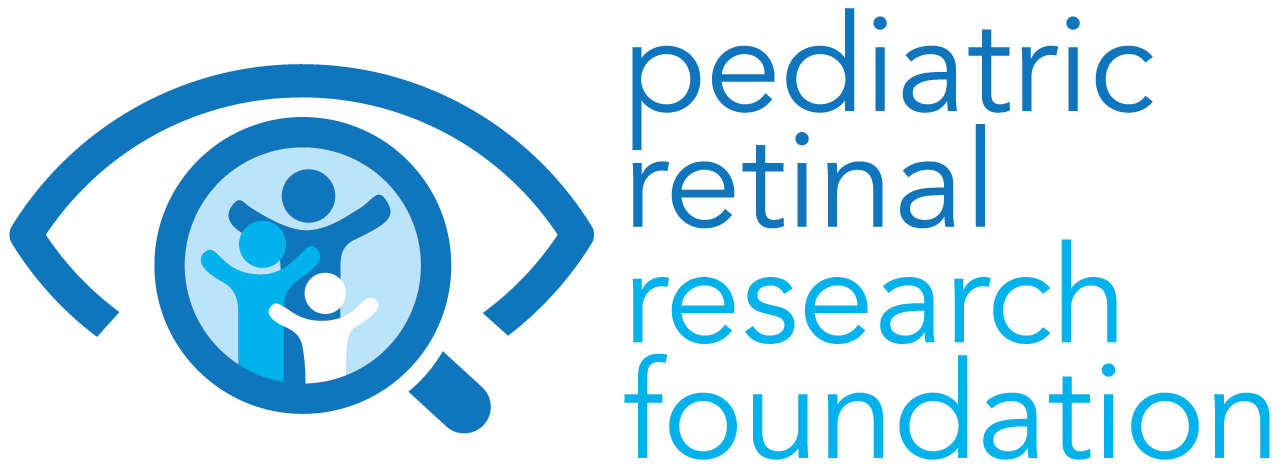Stickler syndromes
The Stickler syndromes, caused by genetic changes (mutations) in the genes encoding collagen, are the most common causes of inherited and childhood retinal detachment. Collagen provides strength and structure to tissues. Mutations in the collagen genes (COL2A1 and COL11A) may result in eye disease by affecting collagen in the white of the eye, the gel that fills the eye, and the retina. This results in nearsightedness (myopia) and retinal changes including ‘lattice degeneration’ (localized areas of peripheral retinal thinning), tears or holes, giant retinal tears, and retinal detachment. When the retina becomes detached, it no longer perceives light and if not repaired may result in blindness. Stickler syndromes are also characterized by non-ocular findings including hearing loss, structural abnormalities of the midface, cleft palate, joint hypermobility, and early onset arthritis.
The lifetime risk of retinal detachment for the stickler syndromes is near 60% for one eye and near 40% for both eyes., The median age of retinal detachment in the stickler syndromes is near 18 years with the highest risk in the 2nd and 3rd decades of life. If a retinal detachment has already occurred in one eye, the median time to retinal detachment in the other (fellow) eye is ~ 4 years. For these reasons, it is reasonable to consider preventative therapy to potentially reduce the risk of retinal detachment and subsequent vision loss.
Preventative therapy may be performed with laser, cryotherapy, or scleral buckling procedures. These treatments do not improve the vision, but appear to result in a 4x-12x risk reduction in retinal detachment (perhaps most successful in reducing the risk of retinal detachment due to giant retinal tears in the setting of COL2A1 mutations). However, these treatments are associated with risks of their own including the development of retinal tears, retinal detachment, cataract, inability to see well at near (accommodation difficulties), visual field loss, changes to the appearance or alignment of the eye, and permanent vision loss. While the risks of preventative therapy appear to be lower than the natural history risk of retinal detachment in the stickler syndromes, there is no evidence-based study supporting the absolute benefit of preventative therapy regarding age, type, and frequency of therapy. The decision for observation versus preventative therapy is best made on an individual basis.
Recommendations:
Regular eye exams with retinal specialist
Monitor for signs of retinal detachment (flashes of light, floaters, vision loss, visual field loss)
Regular evaluation for glasses (refraction) with pediatric ophthalmologist or optometrist.
Evaluation with pediatrician to coordinate hearing tests with audiology and joint evaluation with orthopedics or rheumatology as needed
Avoid contact sports that can result in traumatic retinal detachment but general physical activity is okay
Recommend genetic testing for family members
Resources:
Excellent general information within the GeneReviews chapter on Stickler syndrome which can be accessed online at www.genereviews.org.
Information on a support organization for individuals and families of individuals with Stickler syndrome called ‘Stickler Involved People’ at www.sticklers.org.
References:
Ang, Alan, Arabella V. Poulson, Sandy F. Goodburn, Allan J. Richards, John D. Scott, and Martin P. Snead. 2008. “Retinal Detachment and Prophylaxis in Type 1 Stickler Syndrome.” Ophthalmology. https://doi.org/10.1016/j.ophtha.2007.03.059.
Coussa, Razek Georges, Jonathan Sears, and Elias I. Traboulsi. 2019. “Stickler Syndrome: Exploring Prophylaxis for Retinal Detachment.” Current Opinion in Ophthalmology 30 (5): 306–13.
Fincham, Gregory S., Laura Pasea, Christopher Carroll, Annie M. McNinch, Arabella V. Poulson, Allan J. Richards, John D. Scott, and Martin P. Snead. 2014. “Prevention of Retinal Detachment in Stickler Syndrome: The Cambridge Prophylactic Cryotherapy Protocol.” Ophthalmology 121 (8): 1588–97.
Morris, Robert E., Edward Scott Parma, Nathaniel H. Robin, Mathew R. Sapp, Matthew H. Oltmanns, Matthew R. West, Donald C. Fletcher, Ronald A. Schuchard, and Ferenc Kuhn. 2021. “Stickler Syndrome (SS): Laser Prophylaxis for Retinal Detachment (Modified Ora Secunda Cerclage, OSC/SS).” Clinical Ophthalmology. https://doi.org/10.2147/opth.s284441.
Snead, M. P., A. M. McNinch, A. V. Poulson, P. Bearcroft, B. Silverman, P. Gomersall, V. Parfect, and A. J. Richards. 2011. “Stickler Syndrome, Ocular-Only Variants and a Key Diagnostic Role for the Ophthalmologist.” Eye 25 (11): 1389–1400.
